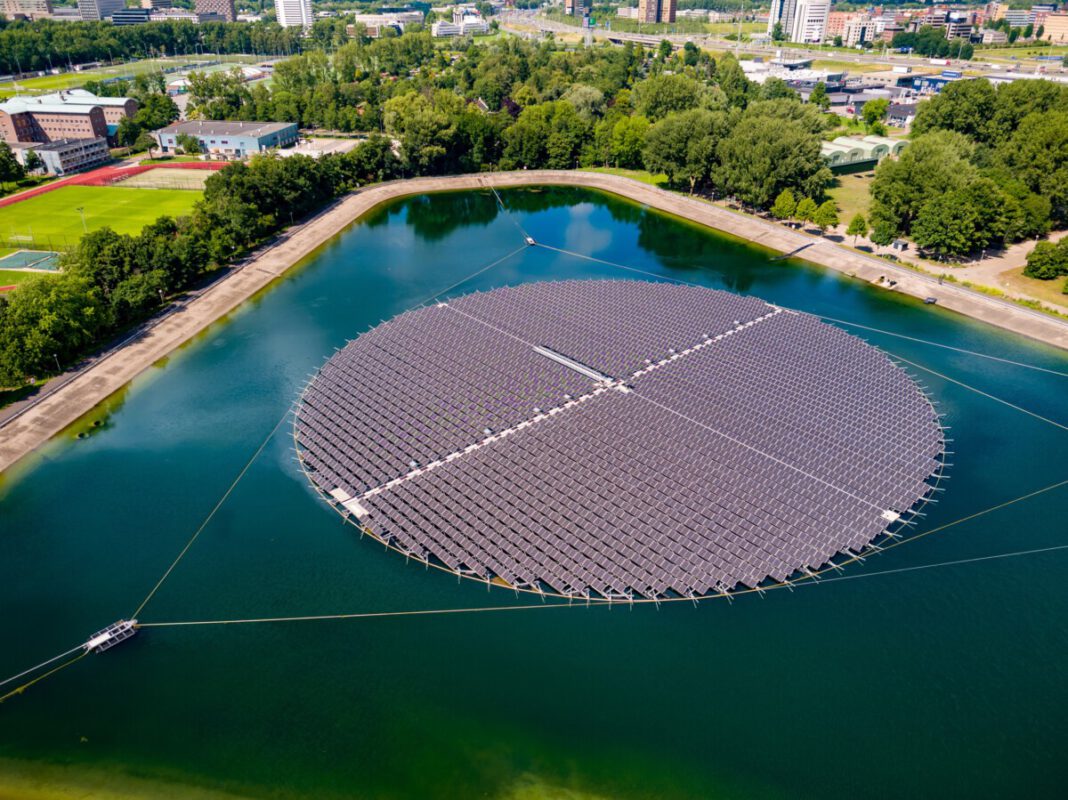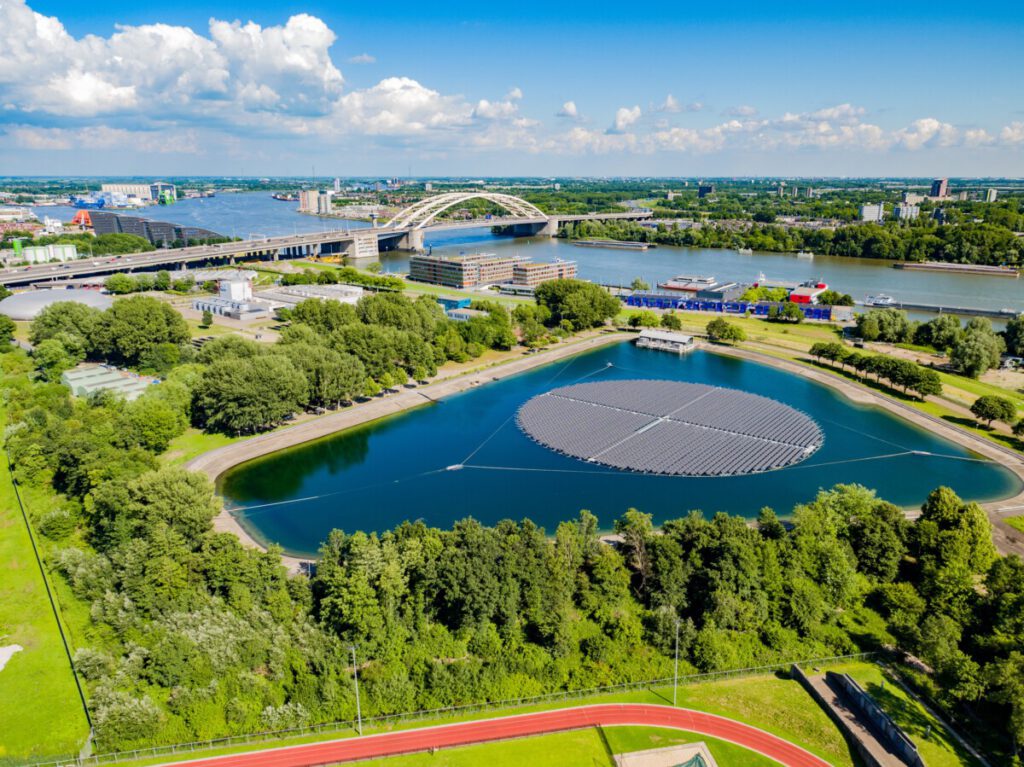This morning, the largest solar island in Europe that rotates with the movement of the sun has been opened in Rotterdam.
By making the solar panels follow with the sun, the energy yield is higher than a normal solar panel on land, reports NOS. The extra yield can be up to 30% more than traditional solar panels.
The panels are located in a water reservoir owned by the water company Evides. Its water is also used later as drinking water. If this solar island is a success, Evides wants to build several more floating solar islands throughout the Netherlands in a bid to achieve energy neutrality.
The island contains 4800 solar panels and the diameter is around 100 metres. The annual yield is around 2 million kWh of renewable energy, equivalent to the energy use of 650 households per year. The special sensors designed to track the sun were developed by Floating Solar.
More on more floating solar panels
Floating solar panels have become more widely used in recent years. The largest “normal” floating solar island in Europe was opened last week in Zwolle. The project has 72,000 solar panels and can supply electricity to 7200 households.
According to the Netherlands Organisation for Applied Scientific Research (TNO), floating solar panels have a promising future. Besides looking at building floating solar island on inland lakes and waterways, there’s now research for building them out in the open sea.
Excited for the future of floating solar panels and the benefits they bring? Let us know in the comments below!
Feature Image: Evides/Supplied





Solar cells degrade before they generate the amount of energy it has cost to manufacture them.
That’s incorrect, where did you get that data?
It takes about two years to generate the amount of energy it has cost to manufacture them. https://understandsolar.com/solar-uses-more-energy-to-manufacture-than-it-produces/
Hans that is based on 4 year old data. I would be surprised if nowadays it is more than 1 year.
In 5 years from now, it will be less than half a year.